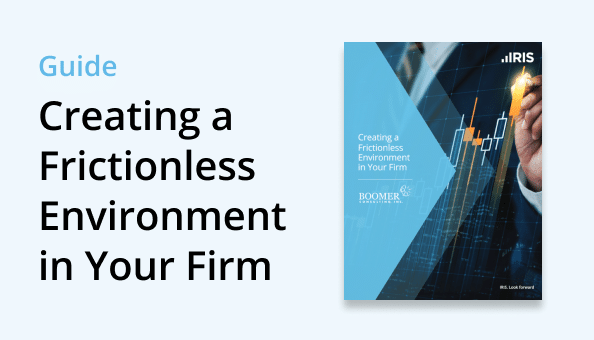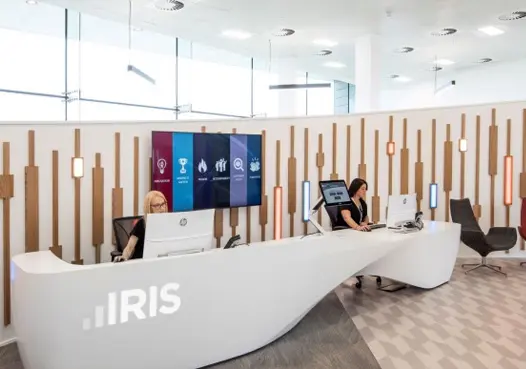What is human capital management (HCM)?
Managing human capital is about making the most of your people, including the capabilities, expertise, and creativity they bring.
In practice, human capital management (HCM) affects how you approach and manage every stage of the employee lifecycle.
It utilizes every aspect of workforce management – from human resources (HR) to payroll – to support staff and maximize the contributions of each employee.

What are the benefits of human capital management (HCM)?
Human capital management (HCM) helps organizations optimize the entire employee lifecycle and ensures you’re getting the most from your people.
With the right HCM strategy, you can:
- Recruit the best talent and effectively onboard new hires
- Streamline payroll and ensure compliance
- Offer meaningful learning and development (L&D) aligned with career aspirations
- Empower employees to become integral contributors to the business
- Improve retention efforts and nurture future leadership from within

Featured Guide
The ultimate guide to human capital management (HCM)
Do you want to harness the power and potential of human capital management (HCM)? Check out this totally free, comprehensive guide to unlocking the potential of your people. It covers:
- A review of HCM essentials
- Keyword glossary
- Ways to improve your HCM strategy
- The risks of deprioritizing HCM
- HCM solutions: software vs services
- Choosing your ideal HCM solution
- HCM software recommendations
Human capital management (HCM) vs human resource management (HRM)
Human capital management (HCM) and human resource management (HRM) share some similarities – like focusing on people and their development – but their goals and approaches differ.
HRM describes a strategic structure companies use to manage their people and improve workplace culture.
HCM covers a much wider scope, including timekeeping, workload tracking, and payroll management. This ensures your people are aligned on a global scale and your overall mission remains a priority.

How to improve your human capital management (HCM)
Who wouldn’t want staff who are motivated, happy, and tuned into your organization’s goals? Take a look at some of these HCM strategies and explore how you can make the most of your people.
-
Bring your people in on wider business goals
What happens when you align your mission and objectives with every member of your organization? Your staff have the opportunity to see how their individual actions impact the organization.
You’re basically telling your staff members: “Hey, we couldn’t do this without you – here’s how your individual efforts are pushing us forward.”
This not only improves morale and encourages individual responsibility, but it also ensures staff understand their value.
There are several ways to implement a strategy like this. At IRIS, we use the Objectives and Key Results (OKRs) model, which outlines what needs achieving (Objectives) and provides a measurable outcome that informs how close you are to achievement (Key Results).
Don’t forget to balance wider business goals against each employee’s individual career aspirations – for them to care about your goals, you need to care about theirs.
-
Spotlight your strengths during recruitment
A strong HCM framework makes your company more attractive to potential hires.
By demonstrating genuine care for employees (and highlighting your efforts in your recruitment material), you’ll attract top talent.
Say you’re recruiting for a vacancy within your business. Rather than focusing solely on how great the role is, ensure the job spec also spotlights what makes your organization a great place to work.
Whether it’s a robust learning and development program, a culture of mutual support, scope for flexible working, or all of this and more.
Show off the fruits of your HCM labors!
-
Focus on employee satisfaction and retention
Recruitment has been a hot topic for a number of years due to the talent shortage.
However, it’s equally – if not more – important to retain the talent you already have.
Good HCM can help.
Take stock of what your employees need and want, with a focus on their individual career aspirations. Explore how you can make their working lives easier and provide them with the resources necessary to go above and beyond. That might include:
- In-house or third-party training
- Role changes or job swaps
- Mentoring or coaching
- Promotions
By providing your people with support and learning opportunities, you’ll see higher rates of satisfaction and fewer people giving in their notice.
-
Strengthen your company culture
Company culture is shaped by many factors, including values, ethos, employee expectations, working environments, and aspirations.
However, company culture isn’t something you can set and forget – it takes constant work.
You can use your HCM strategy to shape and define your company culture through actions like:
- Talking to your people about to find out what they need or what’s holding them back
- Defining core behaviors and providing resources to encourage adherence (e.g. inclusivity and sensitivity training to foster greater understanding between colleagues)
- Providing staff with the means to feedback to senior leadership
- Measuring success, celebrating wins, and commending staff for good performance
-
Enhance communication
So much of HCM depends on collaboration across your entire organization, and for that, you need to facilitate great communication.
While regular company-wide updates or on-site meetings are great, explore how you can facilitate more meaningful communication between your people – particularly managers and their direct reports.
HCM software can help you achieve this by:
Providing leadership with performance and wellbeing data, helping managers to foster truly meaningful conversations
Enabling staff to feedback to leadership through setups like workplace surveys.
Frequently Asked Questions (FAQs)
Still have a few questions? Learn more about human capital management and how it could relate to your business with these handy FAQs.
-
HCM stands for human capital management, which refers to how businesses can use HR and payroll to define, shape, and improve the overall process of managing staff.
-
Human capital management (HCM) is not the same as human resources (HR), but the two are closely related.
HR is responsible for managing employee-related processes, including recruitment, and compliance.
While HCM also relates to how people are managed within a business, it has a wider remit; HCM aims to maximize employee potential to achieve organizational goals.
-
Human capital management (HCM) is similar to the concept of people management in HR, and the two terms are often used interchangeably.
However, there are key differences. While people management refers to the administrative duties associated with employing staff (typically, HR-related activity), HCM casts a wider net and encompasses every stage of the employee cycle.
Plus, HCM is driven by a particular strategy; supporting and developing staff to maximize each employee’s potential – and to achieve ambitious company-wide goals.
-
Yes, you can use HR software to help plan for, implement, and maintain human capital management (HCM) strategy.
HR software – also known as HR Information Systems (HRIS) or HR Management Systems (HRMS) – refers to a suite of digital tools used by businesses to better manage their people.
-
HRMS (human resources management systems) and HRIS (human resource information systems) both refer to a suite of digital tools – typically software – that you can use to more effectively manage your people.
HCM (human capital management) is a strategy designed to optimize all aspects of people management. The goal is to support staff so they have the means to effectively contribute to company-wide goals.
Simply put, HCM is the strategy, and HRMS or HRIS is the system that you can use to implement that strategy.
-
Yes, human capital management (HCM) includes payroll.
HCM is a broad term used to define the overall process of recruiting, managing, and supporting the ongoing development of staff – this includes ensuring people are paid correctly.
Refine your HCM strategy with these insights

Blog Article
The Difference Between HR and Payroll

Blog Article
8 Tips for Hiring in Today’s Tight Labor Market

Blog Article






